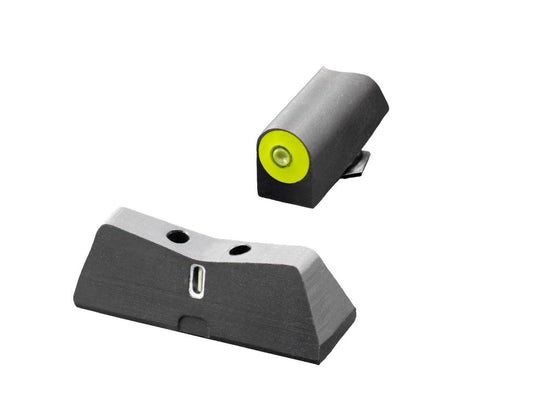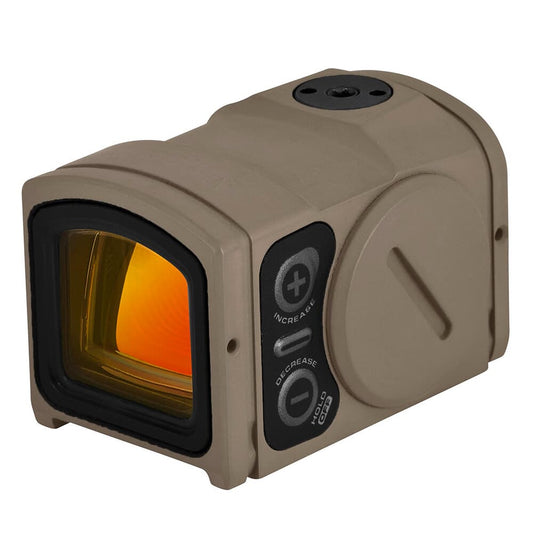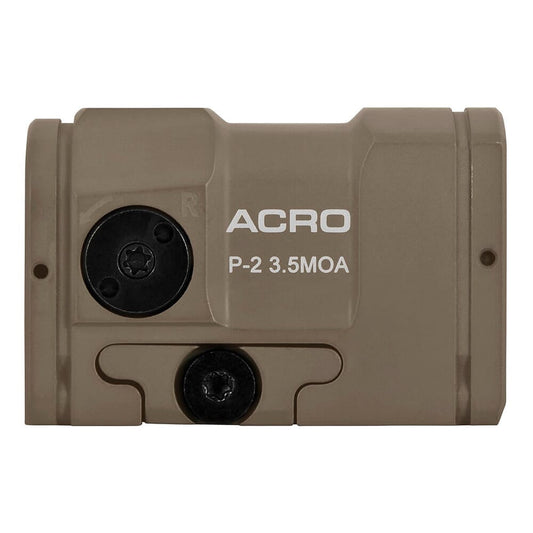

Step up your shooting game with the XS Sight DXT2 Big Dot Sight for SIG Max Michel 1911 - Yellow. This sight is designed for shooters who demand clarity and precision in every shot. The tritium-powered front sight provides optimal visibility in low-light conditions, ensuring you never miss your target. With a high-contrast colored front sight, the dot-the-"i" sight picture simplifies aiming, making it ideal for both novice and experienced shooters alike.
Additionally, the durable CNC machined steel construction guarantees longevity and resilience. The Big Dot front sight measures 0.188", offering a generous aiming point, while the low-profile V rear sight enhances your focus on the front sight. This sight fits standard holster options, making it a practical addition to your gear. With a 10-year warranty and a 30-day satisfaction guarantee, you can trust that your investment in the XS Sight DXT2 Big Dot Sight is well-protected.
Key Features:
- TRITIUM POWERED FRONT SIGHT for superior visibility in low-light conditions.
- HIGH-CONTRAST COLORED FRONT enhances target acquisition and focus.
- BIG DOT DESIGN measures 0.188" for a larger aiming point, perfect for rapid targeting.
- LOW-PROFILE V REAR provides greater visibility of the front sight for improved accuracy.
- SIMPLE DOT-THE-"I" PICTURE simplifies aiming, making it user-friendly for all skill levels.
- DURABLE CNC MACHINED STEEL construction ensures longevity and reliable performance.
- FITS STANDARD HOLSTER OPTIONS for convenient carry and accessibility.
- 10-YEAR WARRANTY and 30-DAY SATISFACTION guarantee for peace of mind.
Technical Specifications Table
| Feature | Details |
|---|---|
| Type | Big Dot Sight |
| Front Sight | Tritium powered |
| Rear Sight | Available in Tritium or Non-Tritium |
| Front Dot Size | 0.188 inches |
| Material | CNC Machined Steel |
| Warranty | 10 Years |
What’s in the Box?
- XS Sight DXT2 Big Dot Sight
- Installation Tool
- User Manual
Customer Reviews
"This sight transformed my shooting accuracy! The tritium really shines in low light." - John D.
"So easy to install and use, the big dot makes targeting a breeze!" - Sarah K.
"Highly recommend for anyone looking to improve their aim!" - Mike R.
FAQ
How does the XS Sight DXT2 perform in daylight?
The high-contrast colored front sight allows for excellent visibility even in bright daylight, ensuring you can acquire your target quickly.
Is the sight difficult to install?
No, the XS Sight DXT2 comes with an installation tool and a user manual, making the process straightforward and manageable for everyone.
How does it compare to other sights on the market?
The DXT2 stands out due to its unique Big Dot design and tritium-powered illumination, offering a combination of speed and precision that many traditional sights lack.
Similar Models
Looking for more options? Explore our range of XS Sights, including the XS DXT Night Sights, specifically engineered for enhanced performance under any lighting condition. Discover the complete collection for superior shooting accuracy and reliability!
You May Also Like
Here’s some of our most similar products people are buying. Click to discover trending style.








